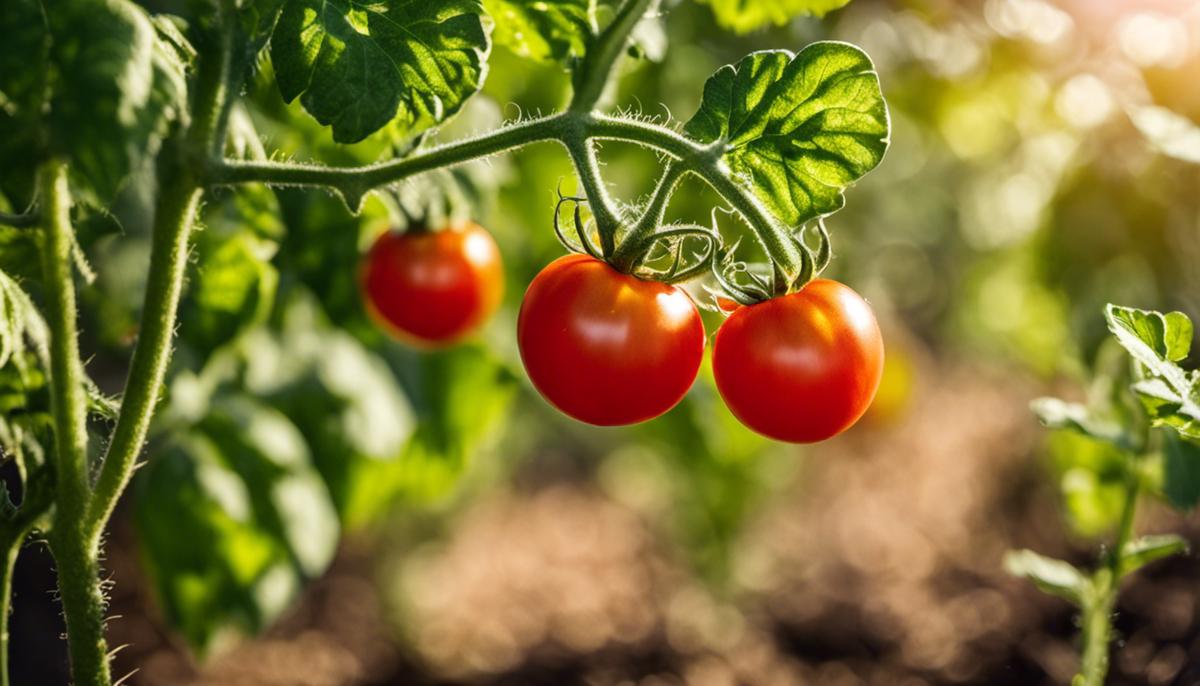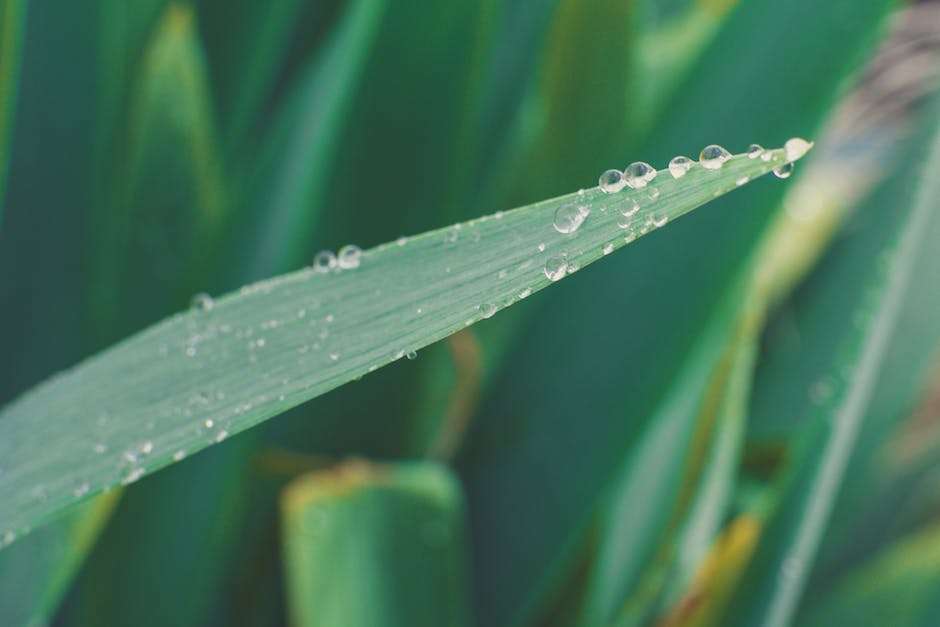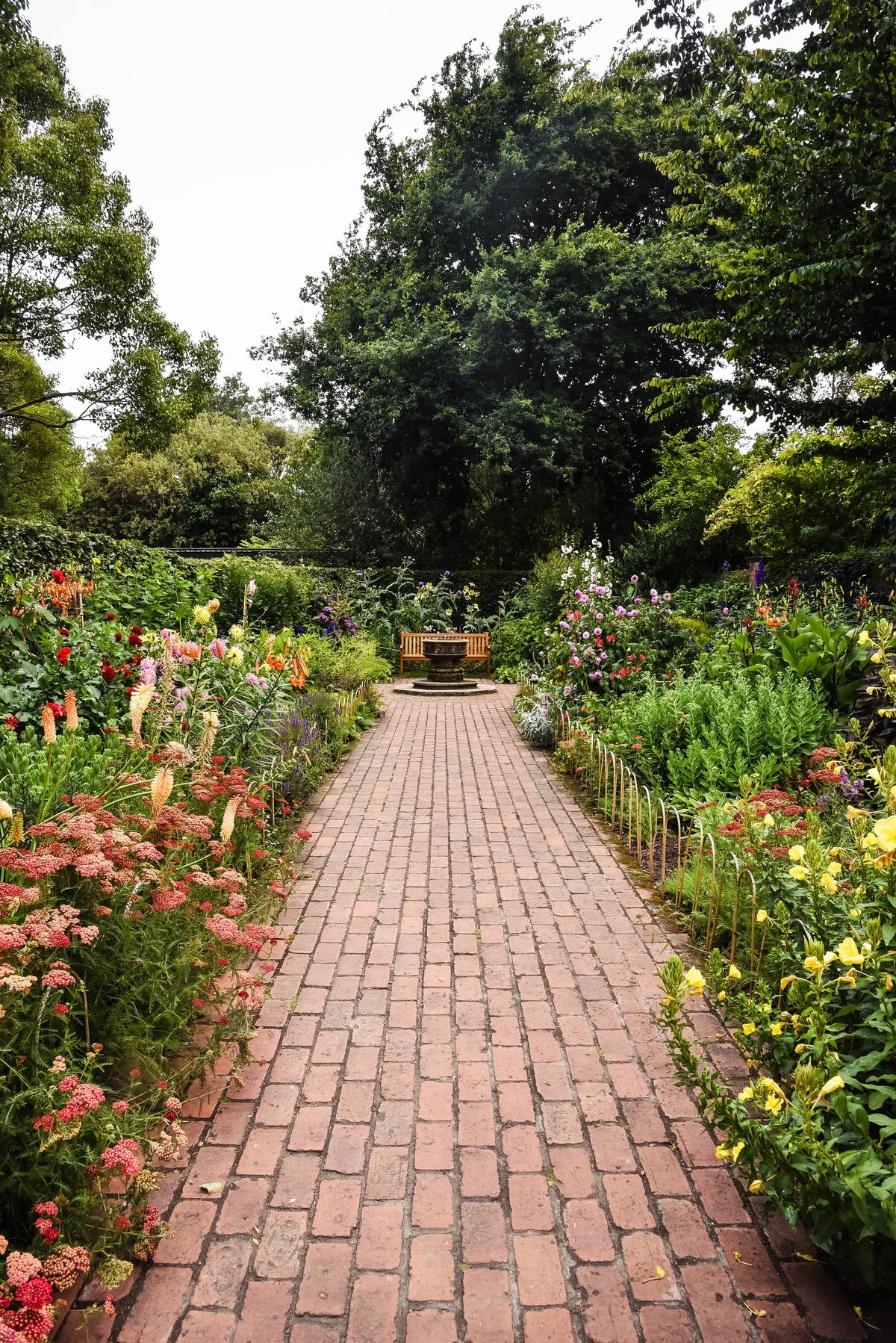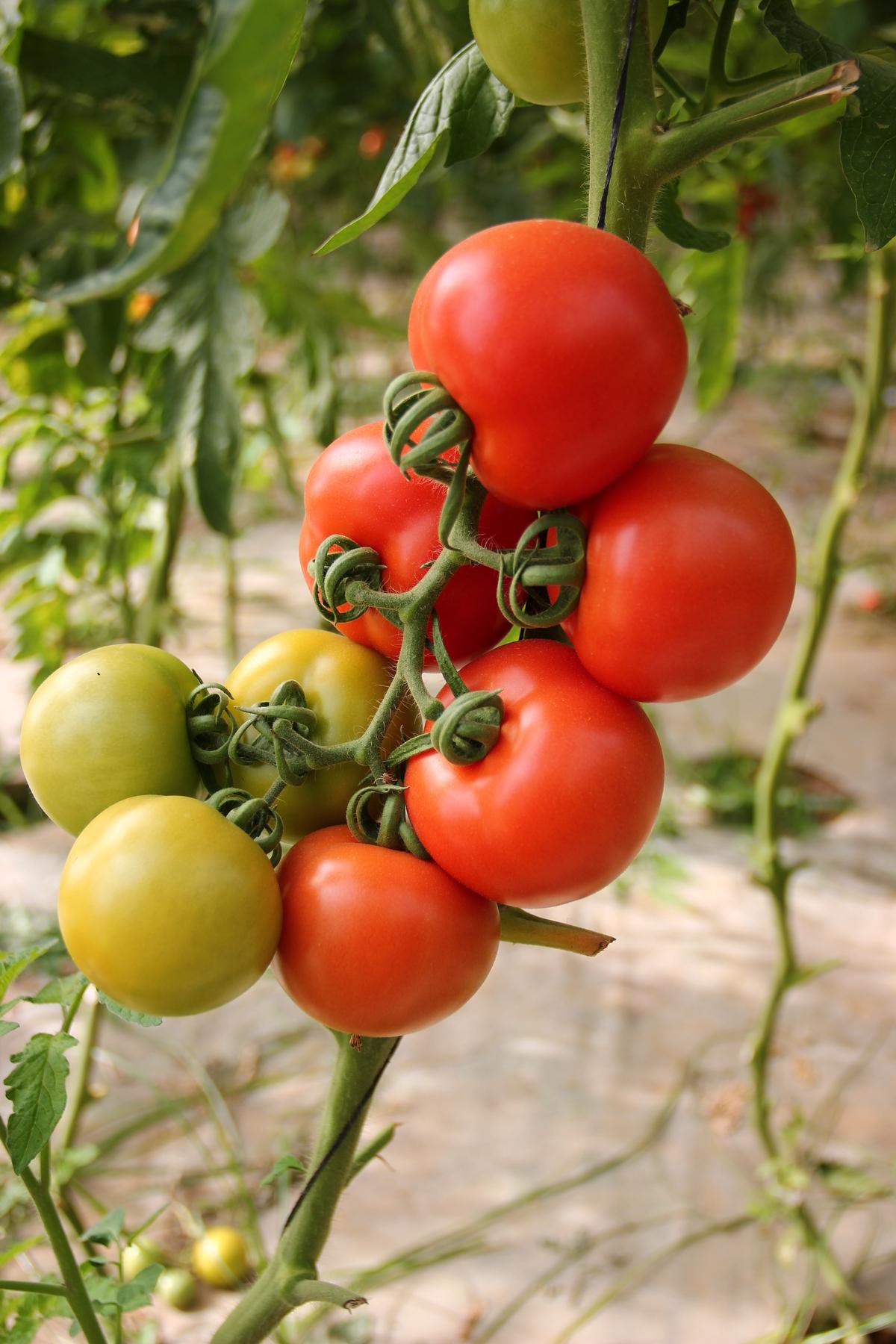Maximizing Sun Exposure for Your Tomato Plants

Envision a succulent, juicy tomato, ripened to perfection and ready to be picked. This wondrous sight is not just the result of meticulous care and nurturing but also a deep understanding of the plant’s pivotal relationship with sunlight. Knowing and fulfilling the sunlight needs of tomato plants is crucial to their growth and productivity. This includes being aware of their photosynthetic process, accurately assessing the sun exposure in various parts of your garden, and adapting to the changing sunlight needs of the plants as they mature.
Understanding plant photosynthesis
The Intricacies of Tomato Plant Photosynthesis Unveiled
Enthusiasts of home gardening often find joy in the intricacies of nature’s miracles. One such wonder is photosynthesis, the very heart of a plant’s life cycle. This mysterious process ultimately wields the power of sunlight, concocting a recipe for life itself. And in the realm of the humble tomato plant, photosynthesis is equally fantastic and fundamental. So, what’s the secret? Let’s dive in.
It all begins when sunlight, often seen as the golden drizzle from the skies, hits the surface of the tomato leaves. These green panels are the headquarters of Photosynthesis Inc, equipped with chlorophyll, a light-absorbing pigment that grants plants their green hue. Think of it as tiny solar panels that collect sunlight for processing.
Once sunlight is captured, chlorophyll goes to work with its magic. Here’s the kicker – even water gets a spot in this incredible process. Enter the roots. They absorb water and vital minerals from the soil, transporting these to the leaves for further process.
The hitch in the giddy-up? Water and light alone aren’t enough. Luckily, the silent ally is always nearby: carbon dioxide. Plants take this in through tiny openings in their leaves—known as stomata—and it’s an incredibly crucial part of the photosynthesis puzzle.
During photosynthesis, the chlorophyll uses the sun’s energy to split the water molecules into hydrogen and oxygen. The oxygen is released back into the atmosphere—providing the very air we breathe. On the other hand, hydrogen is held onto, ready for the next stage of the operation.
Here’s where carbon dioxide truly becomes the star of the show. The tomato plant restructures the hydrogen and carbon dioxide into glucose. This process is the decisive finale of photosynthesis; the tomato plant creates its food, enabling it to grow, flower, and eventually, bear those juicy, ripe tomatoes we love. Over time, they can depend on stored glucose for periods of less sunlight or during their dormant winter stage.
The essential service that photosynthesis provides doesn’t just end with growing tomatoes. It plays a critical role in maintaining the world’s ecosystems, and before you know it, you’ve contributed a substantial part in home growing tomatoes.
In the end, understanding the incredible process that lives at the heart of every green leaf can deepen the satisfaction of harvesting plump, juicier-than-ever tomatoes. Recognizing the sunlight as more than just light, the soil as more than just dirt, and the tomato plant as more than just a plant certainly changes the game. It’s a thrilling cycle of growth and life that unfurls right in our backyards. Remember, the next time you gaze at a thriving tomato plant, you’re witnessing the powerful phenomenon of photosynthesis in action.

Assessing sun exposure in various locations
THE ART OF MAXIMIZING SUNLIGHT: GARDEN GOLD
As greenery hobbyists, we often echo a common mantra: location, location, location…and we’re not talking about real estate! Fundamentally, plants need sunlight, water, and carbon dioxide to perform photosynthesis. Photosynthesis, as we now know, is a critical process for a plant’s survival, growth, and overall yumminess in the case of our edible accompaniments like tomatoes. So, it stands to reason that understanding how to place your garden for optimal sunlight can be a pivotal factor in the health and abundance of your plant-life. Here’s how you can really get that ‘sun’s out, thumbs out’ garden gusto.
UNDERSTANDING SUNLIGHT AND SHADOW
While the ancient Sumerians probably weren’t potting geraniums, their sundial invention provides us with a brilliant method for assessing the sun’s path. Simply place a stick upright in a location and observe the shadow’s movement during the day. It will indicate the location’s sunlight exposure: where sunbeams reach in the morning, noon, and afternoon. This ‘sun check’ will give you a good sense of how much sunlight the location will receive on a typical day.
THE RIGHT AMOUNT OF SUNLIGHT
If the sun were a musical, plants would be the audience not missing a single tune. However, they show varied preferences! Some plants thrive in the shade while others can’t get enough sun. You need to research your chosen plant’s preferences to determine how many hours of sunlight they need.
DON’T FORGET THE SEASONS
Like crafting a favorite playlist, consider sunlight as a varying tune through the year’s seasons. The sun’s path lowers in the sky during autumn and winter, leading to less direct sunlight and shorter days. So, ensure you account for changes in sunlight with seasonal shifts when determining your garden’s location.
MULTIPLE GROWING LOCATIONS
If flexibility is on your bingo card, multiple growing locations might be your trump card. This enables you to move your plants according to the daily sun-track. It’s like being a matching DJ – aligning the plants (records) to the sun (audience) for the perfect beat.
CONSIDER STRUCTURES AND OBJECTS
Trees, walls, overhangs, buildings – all these can cast shadows on your garden area. Assess the location across the day to ensure no unexpected shade is cast over your plants. The human-made structures may block sunlight while trees can result in dappled light, which some plants may prefer.
SEIZE THE MAGIC OF REFLECTED LIGHT
Light-colored and reflective surfaces can magnify light intensity. This ‘sneaky’ sunlight can be perfect for plants needing bright light but not direct sunlight. Trial, error, and adjustment are part of the dance until you find the sweet spot.
Remember, the sun plays the principal role in the photosynthesis process, making it arguably the most critical factor in your green endeavor. By adhering to these guidelines, you can place your garden for optimal sun exposure, contributing significantly to your plants’ vigor and productivity. But most importantly, don’t rush the process, after all, watching your garden thrive under the perfect sunlight is one of the joys of being green-thumbed! Happy gardening!

Adapting to the tomato plants’ sunlight needs
Jumping right in, it’s essential to remember that adjusting the sunlight exposure for your tomato plants isn’t as simple as placing them in a sunny area and forgetting about it. It’s a dynamic process that changes depending on the plant’s growing stage and the current season.
During the germination phase, tomato seedlings require bright, indirect light. Aim for about 14 to 18 hours each day to effectively support initial growth. Seedlings need this amount to begin the conversion of light into energy, which will nourish and strengthen them as they mature. A noteworthy strategy might involve using fluorescent light fixtures placed a few inches above the seedlings. This balances the needed room to grow, with the close proximity the light source must maintain for maximum absorption.
As your tomato plants graduate from seedlings to young plants, their light needs change. Adult plants thrive on strong, direct sunlight. Now, 6 to 8 hours of sunlight is the recommendation. This is because too much sunlight could cause the plant to devote energy to growth rather than fruit production. It’s a delicate balance to strike, but with careful monitoring, the task is attainable.
Now, let’s speak about seasons. The angle of the sun changes with the transitions between spring, summer, fall, and winter. Always keep this in mind, as areas that were once bathed in sunlight might turn into shady regions as the seasons change.
Here’s a helpful tip for tackling shade issues that might come up: remember, near a white wall or fence, you’ll often find an ideal location for your tomato plants. Such structures are perfect at reflecting light, an overlooked hack in the world of gardening.
It’s hard to speak about sunlight without mentioning shadows. Stand at different points in your yard during different times of the day to figure out where the shadows fall. Things like a nearby tree or building can create an unforeseen shadow and significantly reduce your tomato plant’s sunlight exposure.
Lastly, just in case the weather or growing conditions decide to take an unexpected turn, have a second growing location in mind. This could be as simple as having a few planters you can move around. Flexibility can be the key in the unpredictable world of gardening.
Mastering the art of manipulating sunlight exposure is a process. It requires patience, close observation, and ongoing adjustments. Over time, you’ll get a deeper understanding of what your tomato plants need. However, once you start seeing those delightful sun-ripened tomatoes hanging heavy on the vine, every little adjustment and learned lesson will taste that much sweeter!

Photo by shalevcohen on Unsplash
Indeed, the journey to successfully growing tomato plants is marked by numerous stages, each with its unique sunlight requirements. By understanding the principle of photosynthesis and its significance to the plant’s growth, you become more equipped in managing its sunlight needs. Assessing sun exposure at different spots in your garden remains fundamental, empowering you to locate an optimum location for your tomatoes. Through the knowledge of how to adapt to your tomato plants’ changing sunlight needs, you give these sun-loving fruits the best chance to thrive and bear generously. The same principle of sunlight exposure holds true for a variety of plants, reinforcing the intimate link between the sun and successful gardening.



